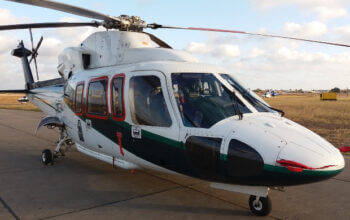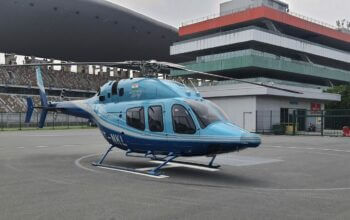Estimated reading time 7 minutes, 2 seconds.
Pilots tend to be a superstitious lot. Since the early days of powered flight, aviation has garnered more than its share of rituals and mythology. Don’t fly over graveyards. Always carry a lucky charm. Kick the tires on a walkaround. The list goes on.
Heading the list of legends are mysterious mischief makers called gremlins. They have been cited as the cause of instrument and engine malfunctioning and other inexplicable technical problems, gaining a reputation as an aviator’s nemesis. The following story covers one IFR flight where gremlins were particularly active.
Many who live in northern climes have experienced the challenges of driving in the full fury of a winter storm — visibility close to zero, and crosswinds that cause the disorienting effect of snow rapidly drifting in S-shaped horizontal patterns across the highway. I call them “snow snakes” because of their serpentine movement, with a most pronounced and almost hypnotic effect of urging you to drift in their direction.

Those were the very conditions I encountered while driving to the airport for a 4 a.m. courier flight from Regina to Melfort, Saskatchewan, then on to Prince Albert.
The weather was at minimums, with solid cloud up to FL 250 and light rime icing reported between 4,000 and 6,000 feet. All in all, normal winter IFR flying conditions. The ground crew had already loaded the Cessna 310 I would be flying by the time I arrived, the only glitch being that my co-pilot had called in sick — the first sign of gremlins at work.
I had recently completed my captain’s check on the aircraft and felt comfortable single-pilot IFR, especially since the 310 had an autopilot. On takeoff, as per the drive to the airport, snow snakes rolling across the runway were vying for my attention, but with excellent runway lights, orientation wasn’t a problem.
Gremlin number two was dealt with.
To my surprise, I flew through a low cloud layer that was not in the forecast, and saw what first appeared to be stars low on the horizon. My initial impulse was that I needed to lower the nose, but quickly realized it was an illusion, with ground lights giving the false impression of stars.
Gremlin number three tucked away.
I continued the climb to the flight planned altitude of 7,000 feet, picking up a bit of light rime on the way, and engaged the autopilot once level. Looking outside, there were absolutely no references for left and right or up and down, just an impenetrable sphere of darkness with only the flashing strobe and nav lights reflecting off the clouds.
The engines were purring away with a bit of leaning, so it was time to get the approach plate out for the ADF approach into Melfort. Reaching into the seat behind me for the approach plates took a bit of twisting in my winter gear. I was only off the instruments for about 30 seconds when I saw the attitude indicator (AI) in a 30-degree left bank, already making for a heading change of 20 degrees off course. The autopilot had malfunctioned and was immediately disconnected, and I quickly rolled to wings level.
That sudden righting of the ship brought into action the next gremlin antic: the “leans,” which is a compelling and disorientating feeling of being in a bank and wanting to lean that way to maintain a sense of balance, even though the AI indicates straight and level. Luckily, I had experienced the effect many times before, knowing it was more uncomfortable than dangerous.
Next stop: Melfort via the ADF approach.
I checked the weather prior to descent, and no surprises there. Ceiling and visibility at minimums, with gusty conditions and blowing snow. I activated the ARCAL (aircraft radio control of aerodrome lighting) to ensure the runway lights were on and set at high intensity. Inbound tracking was solid, but at minimums there was only a deep darkness with no runway in sight — which I later discovered was due to lower than forecast weather, and an inoperative ARCAL not yet listed in NOTAMs. I was tempted to shoot another approach, but as the gremlins seemed to be particularly active that night, it was full power, climb back to altitude, and head to Prince Albert roughly 80 kilometers (50 miles) away.
Given the numerous occurrences throughout the flight thus far, I was half expecting some other issue to crop up — courtesy of the gremlins. But all went according to plan through the final leg, approach, and landing. What’s more, the weather at Prince Albert had lifted considerably from forecast. Maybe the gremlins were feeling generous… or simply tuckered out from their previous tricks.
Are gremlins the product of superstition? Or simply a reminder that you’d better do things right, or there will be consequences? That’s for each pilot to decide, but I, for one, will never skydive on Friday the 13th. Gremlins work 24/7/365.
For those interested, an excellent article on gremlins can be found here.








